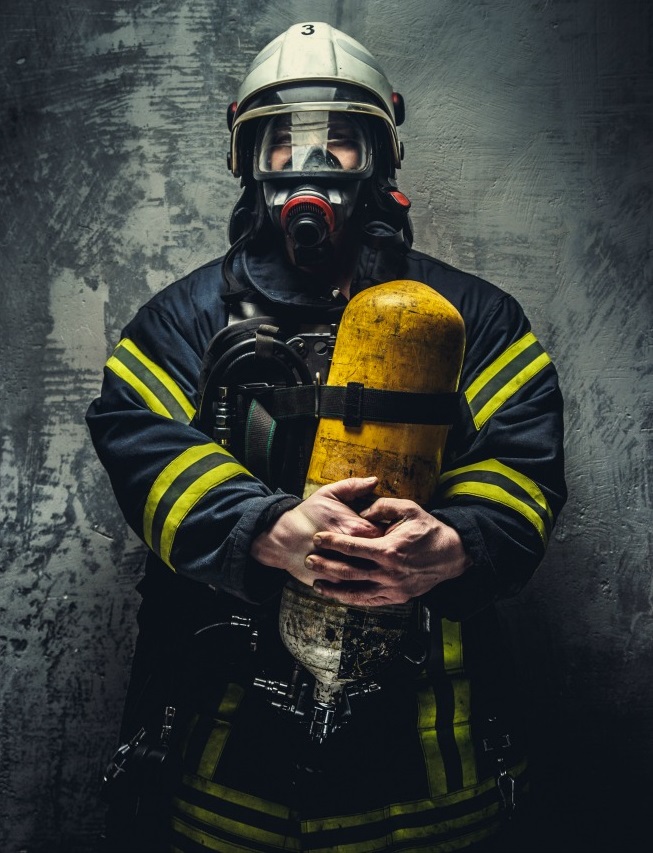

By David Cain
In my first article, I presented a compelling case for the relationship of cancer and firefighting. The toxic environment in which firefighters work is well known, yet the fact remains that we can do more to save ourselves from this scourge.
It begins with leadership. The days of wearing dirty gear and blackened helmets are gone. Hoods, helmets, gloves, air packs, and bunker gear need to be cleaned and inspected after every exposure. We cannot forget all the other items that have been exposed including anything and everything that has been in the path of the “toxic snake”; this includes equipment, ladder, hoses, and our apparatus. The list would not be complete if we forget the firefighters. Keeping our bodies clean with a hot/cold shower is part of this protocol.
There are no more excuses for wearing or working with dirty equipment. The research points to long-term exposure as the big problem. “Long-term” includes time and intensity. Line officers must set the example and make it clear to the “new kids” and the “old vets” that they are going to do it right. Chief officers need to make sure written policy is in place and that policy will be followed.
So, where do we begin? A needs assessment is a good starting point. We all know that fire departments are not created equally. This is a problem because some have resources and others do not. However, exposure is the same. The toxic snake does not care if you are a big metro department or a small rural department.
The needs assessment should begin by reading National Fire Protection Association (NFPA) 1500, Standard on Fire Department Occupational Safety and Health Program, and NFPA 1851, Standard on Selection, Care, and Maintenance of Protective Ensembles for Structural Fire Fighting and Proximity Fire Fighting.
RELATED: Cline on Toxic Atmospheres ‖ Knapp and Moran on Improving Response Procedures to Natural Gas Emergencies ‖ Ciampo on The Gas Years
Let’s look at NFPA 1851 first. This document is very straightforward: routine cleaning and inspection procedures are required of ALL RESPONDERS AFTER EVERY SOILING/USE. Strong words for sure. This document is too long to cover in this article, but I highly recommend that your department print it and teach it to all firefighters and staff.
Some main points of NFPA 1851 include routine cleaning, advanced cleaning, and specialized cleaning and inspection after each use; this includes soiling, contamination, physical damage, and thermal damage. Recordkeeping is also critical under 1851; the standard uses the word “shall” as part of the recordkeeping. The following is part of “shall”:
- The person issued the equipment.
- Date and condition when equipment is issued.
- Manufacturer and model name or design.
- Manufacturer ID number, lot number, or serial number.
- Dates of and findings of advanced inspections by organization.
- Date of advanced cleaning or decontamination by organization.
- Reason for advance cleaning or decontamination by organization.
- Date of repairs, who performed repairs, and brief description of any repair.
- Date of retirement.
- Date and method of disposal.
This is a big undertaking and can be expensive. Replacement funds need to be budgeted and ownership needs to be assigned. Working with your suppliers may be of help. Remember, documentation is your protection and proof that you are following the rules. If you do not document your program, it does not exist.
Putting a program together is the first step in changing the culture. Getting “buy in” is not always easy in this profession of tradition; education and knowledge need to be part of training. Officers must set the example and watch over the troops—especially the new ones who have not yet experienced a hazardous environment.
Do it right and hope that the toxic snake does not strike your department.
David Cain is deputy chief (Ret.) with the Boulder (CO) Fire Department, where he served for 34 years. He works as a consultant for PSTrax.com, a technology service that helps fire departments across the country automate their apparatus, equipment, and inventory checks.

